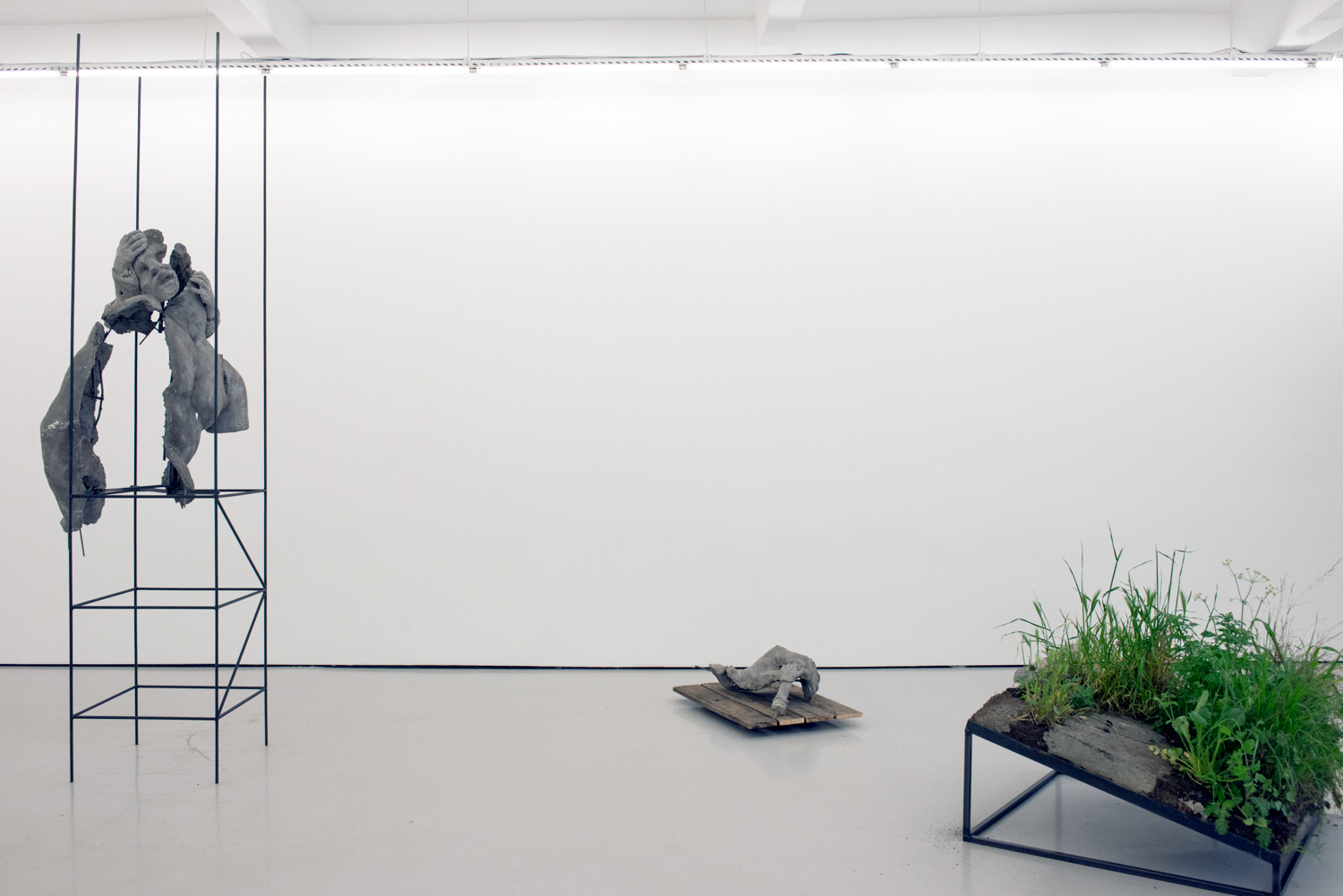Ugo Schiavi
French artist Ugo Schiavi explores the elements of contemporary art through the art of archeology; a field that most would associate with the “old”.
By creating in various countries over the years, he adopted a multifaceted perception of art. And his last stop is İstanbul! We talked to Ugo while he was preparing for his solo exhibition Uprising at The Pill Gallery.
Nice, Bogota, Tbilisi, Paris… You attended many art residency programs around the world. How do you think experiencing different cultures effected your take on art?
“I hate traveling and Explorers” said Claude Levi Strauss. With this quote I mean that it is my way of creating that pushes me to travel and not the opposite. I like to think that I work as an ethnologist or archaeologist. Thereby, travel is essential, but is not an end itself. It is a tool. Thus, I may as well find myself in the depths of North Carolina to exhume old doors from a car graveyard to transform them into an “antique” shield… Then go to Bogotá to make golden masks from homeless people’s faces – directly inspired by pre- Columbian remains… Or why not extracting square meters of abandoned landscapes in Marseille or in Istanbul… Or even making castings of statues in public places in Paris or elsewhere.
What does “contemporary archeology” have to show us?
Archeology is not necessarily interested by what is distant, ancient or mysterious. It studies what constitutes our present. The vestiges that I create speak about the past, but it also addresses the future, illustrating the timeless conflict between the antic and the current. A reality where we fight against consumer society while being part of it; all at the same time
“What will remain of our society? What will remain of me? In a near future, what will archaeologists understand of our lifestyle?” These questions are not new and many archaeologists and artists have tried to answer. In my case I use archaeology more as an object. My artworks and installations are based on fragments that I gather in a world of images. The dialogue between my art pieces and archeology is an attempt to bring to life the tricky notions of time, space and materiality.

Art in form of activism goes back a long way in history. In your point of view, what does it mean in todays world?
This question could be a subject of a thesis itself. I would not write it. And let’s be clear, I do not consider myself as an activist. Being an artist in our society is already to be an activist in a way. I genuinely wonder if artwork still have an impact in a society where the religion-political bloc have reserved the exclusivity of values. Art could changes opinions and perceptions but can not change the facts and the balance of powers.
How about your current solo exhibition at The Pill Gallery… How are the notions you explore defined here?
Basically I take over bits of statues that I choose in the public space by using the techniques of imprint and moulding. Most of the time Igethelpfroma«partnerincrime»whowill«lay»anarmora foot on a specific part before I immortalise the encounter between the two body fragments: one contemporary and alive the other frozen in history. I describe the operation as « vandal moulding » or « pirate archeology » as it demands a certain level of organisation and a great speed in order to avoid some representative of the authorities putting an end to it. The resulting sculptures operate like a shift which would be the turning of a monument designed to last through the years into a fragile fragment of solidified present time.

Tell us about your creative process. What were your greatest challenges in putting together this show?
My works are tests of strength, and I consider my studio as a battlefield. The struggle that I engage with materials always carries a symbolic force of the fights I actually represent. Here the biggest challenge was to create three new art pieces in one week and make them dialogue with the rest of the exhibition. I’m talking about the three plant parts. The three « squares meters of waste land». They are formally very different from the fragments of concrete bodies but are nevertheless in the same set.
My “archaeological” projects in Istanbul is an approach to talk about the city today. It’s a sampling of territory. A way of taking possession of the reality, a little of the collective territory. An exploratory will, the shaping of a social bond and the revelation of the tensions characteristic of the urban fact. It is an act of appropriation. It responds to a human need which is to leave traces. I think this need is a response to the agonizing awareness of death.